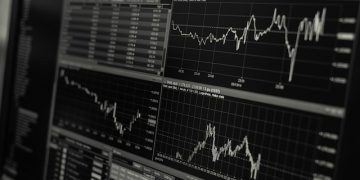As industrial took off in 2020, so did new construction in Florida markets. In many of those areas, completions have reached historic levels.
In the second half of 2020, large-scale speculative construction projects or expansions at existing industrial parks were announced in multiple Florida markets, according to Cushman and Wakefield’s “Florida Industrial Construction” report.
There was 15.4 million square feet (MSF) under construction at the end of 2020. In addition, another 29.7 MSF is poised to come online in the next three years.
Out of this new construction, speculative building dominated. At the end of 2020, 5.8 MSF of speculative building had been completed. C&W says Build-to-Suits accounted for 43% of all completions.
Many of those speculative projects under construction have yet to attract tenants. By the end of 2020, only 56% achieved any pre-leasing.
“In several cases, developers moved ahead with entitlements hoping to land a sizeable build-to-suit for a new-to-market or expanding tenant,” according to C&W.
Drilling down into individual markets, Miami leads the way with 8.7 million square feet of industrial space proposed. Tampa Bay (6.0 million), Lakeland (5.8 million), Jacksonville (3.7 million), Broward (2.4 million), Orlando (2.0 million) and Palm Beach (1.2 million) are next.
Tampa Bay leads with 3.4 million square feet of industrial space under construction. It is followed by Miami (2.7 million), Broward (2.2 million), Orlando (2.2 million), Jacksonville (1.9 million), Lakeland (1.7 million) and Palm Beach (1.4 million).
The highest preleasing was found in Lakeland (91%), Jacksonville (84%), Orlando (60%) and Miami (50%).
In a recent report focusing on Jacksonville, Colliers International found that construction, which represents about 1.9% of the current industrial stock, created a “trickle-up” effect where industrial users are shedding dated space for quality new construction product. The trend has produced a combination of rising industrial vacancy—which hit 5.4% in the fourth quarter—and rising rents—which increased to $5.21 per square foot.
While other asset classes are closely monitoring the vacancy rate—typically because a rising rate leads to tempered if not negative rent growth—Colliers says that increased vacancy is actually a welcome relief in the Jacksonville industrial market. In 2018, the local vacancy rate reached lows of 2%, giving users limited options. Today, the increased rate of 5.4% still points to healthy market conditions, and new construction activity is well matched to demand.
Nationally, industrial space is getting absorbed. In a recent report, Moody’s Analytics said the warehouse/distribution space absorbed 35.4 million square feet in Q4, its highest mark since Q1 2019 when 70.7 million square feet were absorbed.
Construction for the new warehouse/distribution space fell to 25.8 million square feet in Q4 after hitting 38.2 million square feet added in Q3, according to Moody’s Analytics. The space has posted an average of 36.8 million square feet of new inventory added per quarter in the prior six quarters.




